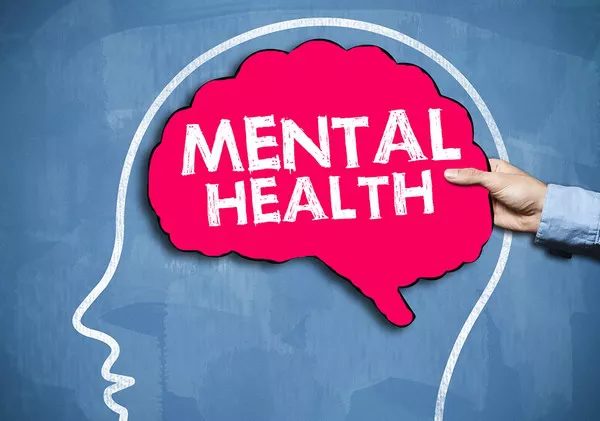In the realm of mental health, anxiety and depression are two of the most prevalent and frequently discussed conditions. While both can significantly impact an individual’s well-being, it’s important to recognize that anxiety and depression are distinct disorders with their own unique features. In this article, we will delve into the similarities and differences between anxiety and depression, helping you gain a clearer understanding of these conditions and offering insights that can contribute to improved mental health and well-being.
Defining Anxiety and Depression
1. Anxiety
Anxiety is characterized by excessive worry, nervousness, and apprehension about future events. It can manifest as physical symptoms like a racing heart, sweating, and trembling, as well as cognitive symptoms involving persistent thoughts of potential harm or danger.
See Also: How to Recognize an Anxiety Attack: Finding Signs & Seeking Relief
2. Depression
Depression, on the other hand, involves persistent feelings of sadness, hopelessness, and a lack of interest or pleasure in once-enjoyable activities. Physical symptoms such as changes in appetite and sleep patterns often accompany cognitive symptoms like low self-esteem and difficulty concentrating.
See Also: 10 Common Triggers of Depression
Common Symptoms
1. Overlapping Symptoms
While anxiety and depression have distinct symptoms, there are some areas of overlap. For instance, sleep disturbances, irritability, and difficulty concentrating can occur in both conditions.
2. Unique Symptoms
Anxiety may lead to restlessness and an intense fear of specific situations, whereas depression may cause a pervasive sense of worthlessness and a loss of interest in activities.
Physical Manifestations
1. Anxiety-Related Physical Symptoms
Anxiety often triggers the body’s “fight or flight” response, leading to physical sensations like rapid breathing, increased heart rate, and muscle tension.
2. Physical Symptoms of Depression
Depression can manifest physically through changes in appetite and sleep patterns. Individuals may experience fatigue, decreased energy, and even unexplained physical aches and pains.
Underlying Causes
1. Anxiety’s Underlying Factors
Anxiety can stem from a combination of genetic predisposition, brain chemistry imbalances, and environmental stressors. Traumatic experiences and phobias can also contribute to anxiety.
2. Factors Contributing to Depression
Depression’s roots can be linked to genetics, brain chemistry changes, and life events. Factors such as loss, trauma, or chronic stress may trigger or exacerbate depressive episodes.
Duration and Intensity
1. Duration of Symptoms
Anxiety tends to involve heightened states of arousal that may come and go. Panic attacks, characterized by intense anxiety, can be short-lived but extremely distressing.
2. Persistent Nature of Depression
Depression often lingers for longer periods, with episodes lasting weeks or even months. It can lead to a persistent low mood that affects daily functioning.
Diagnostic Criteria
1. Diagnostic Criteria for Anxiety Disorders
The Diagnostic and Statistical Manual of Mental Disorders (DSM-5) outlines specific criteria for various anxiety disorders, such as generalized anxiety disorder, panic disorder, and social anxiety disorder.
2. Diagnosis of Depressive Disorders
Depressive disorders, including major depressive disorder and persistent depressive disorder, are diagnosed based on DSM-5 criteria involving the presence of specific symptoms over a defined period.
Treatment Approaches
1. Cognitive Behavioral Therapy (CBT)
CBT is an effective therapeutic approach for both anxiety and depression. It helps individuals identify and modify negative thought patterns and behaviors that contribute to their conditions.
2. Medication
Antidepressant medications can be prescribed for both anxiety and depression, though specific types may be more suitable for one condition over the other. It’s important to work closely with a healthcare provider to find the right medication.
3. Lifestyle Modifications
Engaging in regular exercise, maintaining a balanced diet, getting sufficient sleep, and practicing stress-reduction techniques like mindfulness and meditation can benefit individuals dealing with anxiety and depression.
Seeking Professional Help
1. Importance of Professional Guidance
For accurate diagnosis and appropriate treatment, seeking help from mental health professionals is crucial. Licensed therapists and psychiatrists can provide tailored interventions based on an individual’s unique needs.
2. Combination of Therapies
Sometimes, individuals may experience both anxiety and depression simultaneously. In such cases, a combination of therapeutic approaches may be recommended to address both conditions effectively.
See Also: What’s the Link Between Depression & Anxiety?
Conclusion
In conclusion, anxiety and depression are distinct mental health disorders, each with its own set of symptoms, underlying causes, and treatment approaches. While they share some commonalities, it’s crucial to recognize the differences between the two in order to receive accurate diagnosis and effective treatment. Whether you or someone you know is struggling with anxiety, depression, or both, seeking professional guidance and support is essential for promoting mental well-being. By understanding the nuances of these conditions, we can work toward greater awareness, empathy, and improved mental health outcomes for individuals and communities alike.


